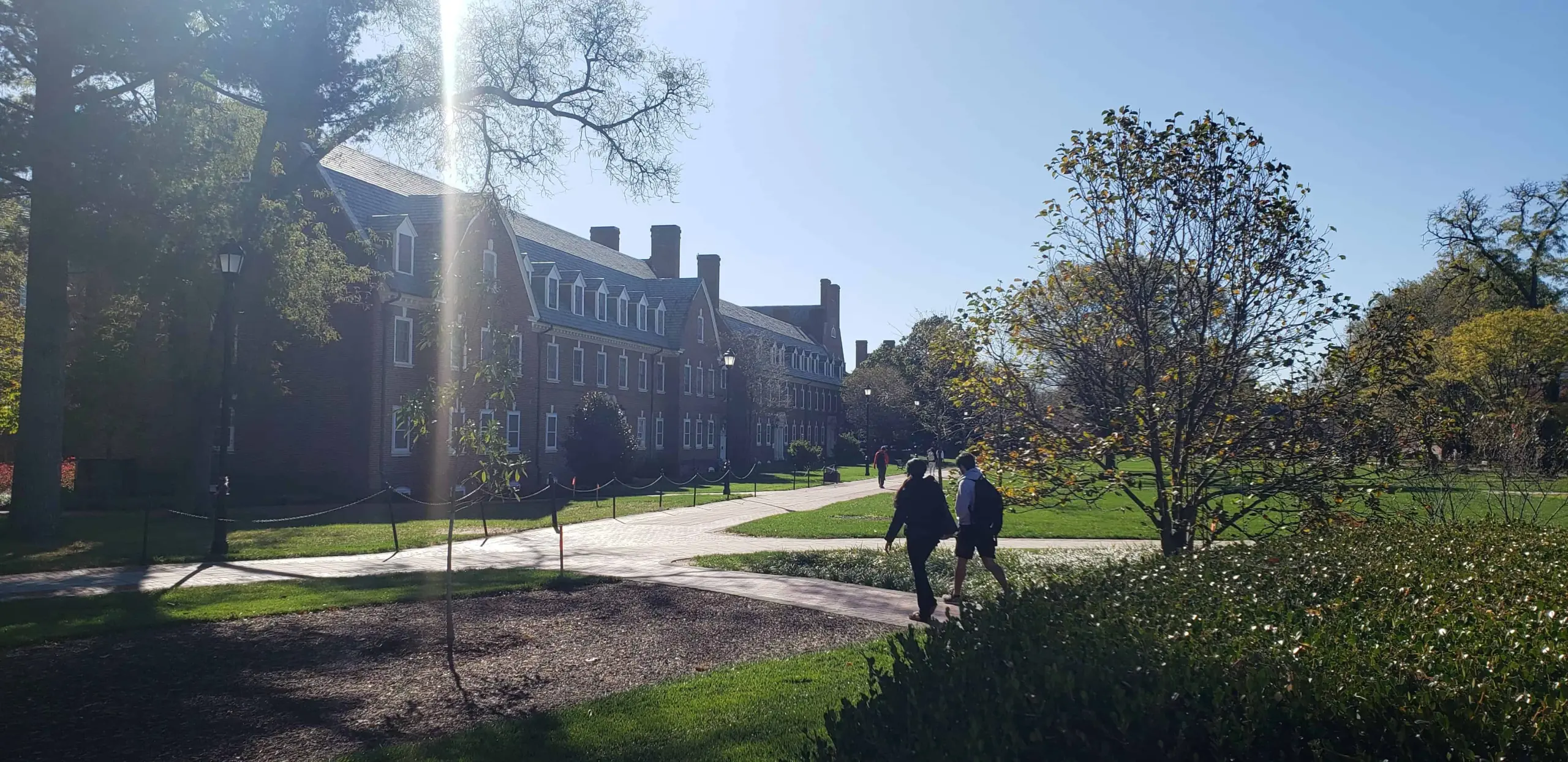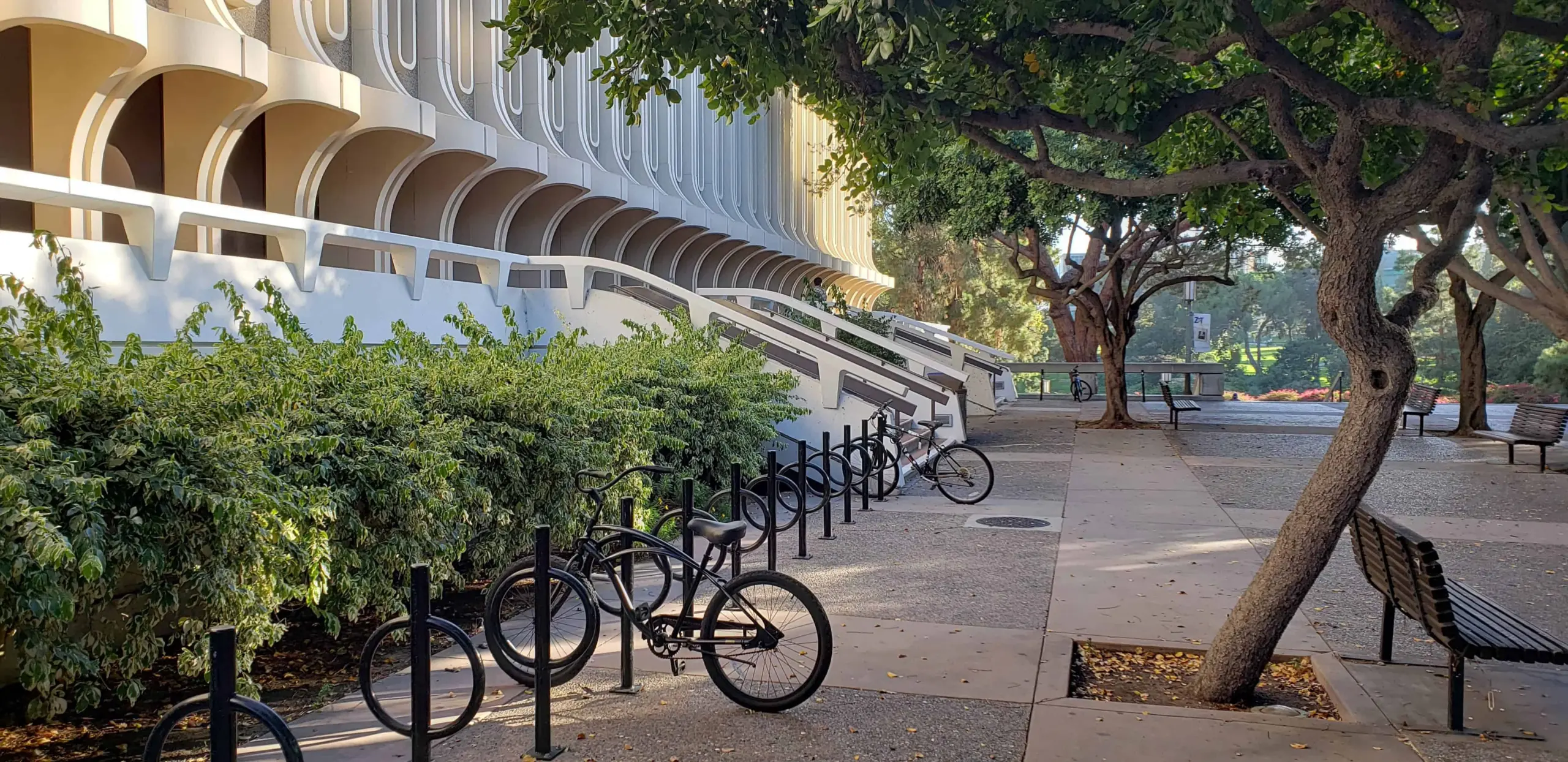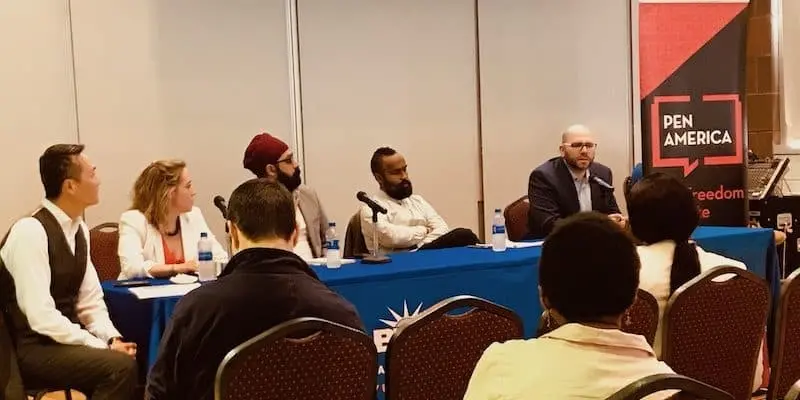This piece was originally published by the Center for Higher Education Leadership.
Drawing on work by PEN America, Jonathan Friedman discusses three cases where the principles of diversity, inclusion, and free speech have come into conflict. These include incidents involving hateful speech on campus, bias response systems, and inclusive language guides. Rather than elevating one principle and discarding the other, Friedman explains how campus leaders can instead harmonize and balance the defense of free speech with the advancement of diversity and inclusion, for the benefit of academic traditions and student learners alike.
College campuses have long been conflict-ridden. Between their operations-minded administrators, their academically-oriented faculty, and their replenishing cycles of students, there is much to disagree about. Sociologists and historians have commented at length on this character of the academy, describing segmentation, isolation, and anarchy as central organizational features. Management innovations, academic theories, and social causes rarely sweep over colleges and universities whole cloth, so much as they vie for dominance. Debate and dialogue are not just core to academic traditions and the search for knowledge; they are also the means by which conflicting visions are harmonized in the everyday operations of colleges and universities.
Central as these insights are to understanding these organizations, they have rarely been considered when it comes to discussion of recent tensions on campuses between the ideals of free speech, on the one hand, and diversity and inclusion, on the other. Despite strong support for both principles from campus leaders, some contingents within the academy have argued that one ought to be valued above the other — particularly when they feel one of these principles is under threat.
For example, some worry about how efforts under the banner of diversity and inclusion seem politicized, threatening to encroach on the climate for academic freedom. Others feel that free speech is too often invoked to defend expressions of hate that threaten to undermine efforts to make campuses more inclusive and equitable learning environments.
Although various individuals and groups have put forth frameworks for upholding these dual sets of principles in tandem, it can be challenging to implement such philosophies in practice. How do academic leaders support free speech to the utmost if it might contradict a spirit of true equity and inclusion? How can they support diversity and inclusion efforts if they seem to the detriment of a robust climate for free speech?
Conflicts between these ideals, like many tensions on campuses, are not easily resolved. But it is possible to reframe this conflict, and examine how the liberal values of free speech, non-discrimination, and inclusion can be mutually reinforcing, rather than at odds with one another. In fact, the way forward for higher education is to remain committed to both of these principles. That means campus leaders must find ways to balance, harmonize, and fold them into one another, rather than choose between them.
Herein, I draw on advice in PEN America’s digital Campus Free Speech Guide to show how this balancing act can be achieved. I focus on three examples where the principles of free speech and inclusion have experienced particular friction:
- Hateful speech on campus
- Bias response systems
- Inclusive language guides
Together, these cases serve as models for how the tensions between these principles can be ameliorated, such that campuses can remain committed to the ideals of free speech, diversity, and inclusion in tandem.
Hateful Speech on Campus
The Challenge
A recent rise in incidents of manifestly hateful speech, slurs, symbols, and slogans on campuses across the U.S. has understandably raised alarm for students, faculty, and administrators alike. Sometimes it has also pitted advocates of free speech and inclusion against each other. In the search for how to respond to and counter this rise of hate, some have turned to solutions that would involve establishing new restrictions on speech — for example the passing of “hate speech laws,” or other punitive measures. While perhaps understandable, such proposals would likely be unconstitutional, and would also undermine protections for free speech that have historically been critical in protecting the voices of those deliberately excluded or devalued by society. Maintaining those protections means preserving the right to express speech that is abhorrent or heinous.
Unquestionably, a contingent of actors have been emboldened in recent years to demean, bully, and air — or even celebrate — their bigotry. These incidents do not always involve interpersonal exchanges, but often manifest as messages scrawled on walls, flyers posted around a campus, or messages sent anonymously online. While some involve actors within campus communities, a great many involve external actors, some of whom have deliberately targeted campuses. Particularly at public colleges and universities, a common sentiment is that, because of First Amendment protections for even hateful speech, campus leaders’ hands are tied in terms of response, and that they can do little to curb or prevent these incidents from happening.
Possible Solutions
Just because responses to hateful speech should not abridge the principles of free speech, however, does not mean that they must be toothless, nor limited in scope. It is in fact essential that campus leaders treat incidents involving hate and bigotry with the utmost urgency, as part of upholding their commitments to diversity, equity, and inclusion. Campus leaders can also conduct credible investigations into whether particular instances constitute discrimination, harassment, true threats, the incitement of imminent lawless action, or a hate crime — all of which might nullify the protections for speech afforded by the First Amendment, and in fact demand legal recourse.
Campus leaders can also speak out against hateful speech forcefully and genuinely, emphasizing collective outrage, expressing empathy with those targeted, and offering support for those affected. They can make clear that such expressions violate their institutional values, and that the institution’s defense of free speech does not equate to an endorsement of hate rhetoric. They can initiate steps to teach about hate and to promote messages of equity and inclusion — not just reactively but proactively, making such programs part of the institution’s routine activities.
Such actions can go beyond expressions of solidarity, demonstrating that the institution is deeply committed to being inclusive, even while it maintains a robust defense of freedom of expression. The more campus leaders can do to show they are taking concrete steps in the face of hate, the more they will be able to blunt what might be unrealistic or problematic calls for punishment, as well as ensure that the rising generation do not see the concept of free speech as a principle only used to defend hate, rather than to combat it.
Bias Response Systems
The Challenge
One mechanism that many colleges and universities have adopted in recent years to confront incidents of hate are known as “bias response systems.” Generally designed as a means to report incidents of bias or hate to institutional authorities, these systems have taken many different forms. Some use online systems to intake information, and many involve appointed committees that adjudicate what kind of response is necessary. That power has been a source of criticism though, with concern that these systems or committees constitute a means of punishing individuals for their speech, in violation of their constitutional rights. Particularly where these committees are empowered to convene hearings, or discipline students or faculty for speech that would otherwise be protected under the First Amendment, there is a legitimate concern that these bodies could chill speech just because it is disfavorable or unpopular.
Concerns that these systems or bodies could be overly punitive and restrict speech are not unfounded, and it indeed may be the case that their existence leads individuals to report exchanges that are ambiguous or offensive, but not necessarily biased or hateful. Their mere existence may also have a chilling effect, leading campus community members to feel their speech is being monitored or surveilled.
But the argument that these efforts should be completely disbanded is misguided. The reality is that for much of their history, colleges and universities have had no formal mechanisms in place to document these kinds of incidents, even as a means of simply assessing the everyday experiences of their constituents. These mechanisms can give voice to constituents who may not feel comfortable reporting their concerns to police or to other institutional authorities, and to those whose concerns may have been historically neglected or ignored.
Possible Solutions
Being able to track reports of such incidents, to acknowledge them, and to ultimately address them, are all benefits of these systems, and these are all measures that might help rectify tensions on campus surrounding hate. As has been done on some campuses, these teams can also be tasked with developing programs to educate about hate, bias, bigotry, and racism. Such proactive measures would not infringe directly on anyone’s speech rights.
Colleges and universities can also set up these systems in ways that do not give them the power to discipline individuals for speech alone. Rather, these systems can continue to fulfill an important reporting function without that power. To continue to minimize the risk that they might have a chilling effect, the personnel involved in these systems and teams should be well-versed in the First Amendment, the principles of free speech, and contemporary laws and statutes regarding discrimination and harassment. Their roles should also be narrowly defined so as to avoid overreach.
Following these prescriptions would ensure that these bias systems not run afoul of ensuring a robust climate for free speech, but instead provide institutions with an additional tool to foster an inclusive climate where all feel heard and welcome.
Inclusive Language Guides
The Challenge
Another practice that has garnered concern from advocates for free speech, academic freedom, and open inquiry are efforts to create speech codes on campuses, or to promote “inclusive language guides.” These are lists, usually circulated internally among campus administrators, which enumerate words or phrases “to avoid,” and corresponding words or phrases which are presented as better alternatives.
The impetus behind these efforts makes sense — they have grown out of an effort to help individuals be more conscientious in their use of language, to raise awareness of how commonly accepted terminology is evolving, and in some cases to draw attention to shifting norms surrounding individuals’ gender pronouns. However, it is incumbent upon campus leaders to consider not just the intent behind these efforts, but their impact.
By circulating official lists of ‘approved’ or ‘disapproved’ words that even seem to have the institution’s imprimatur, the university risks setting up individuals to be criticized, lambasted, or even disciplined simply for using certain words or metaphors, including in situations where they lack any ill intent. These lists not only run against the grain of creativity, but ignore the complexities and nuance of language — for example the history of vulnerable groups reclaiming language by turning slurs into terms of affirmation and empowerment.
Implicit in these efforts is a belief that institutional authorities should play a role policing discourse, a principle that is not only completely at odds with the notion of free speech, but also with academic traditions of intellectual inquiry and cross-cultural exchange. While spurred by an effort to make campuses more welcoming and inclusive, these lists ironically send the message that a specific, doctrinaire, and exclusive mode of conversation should rule campus life. These efforts not only run the risk of creating campus environments where people will be wary of speaking for fear of crossing these rhetorical redlines; they also risk creating campuses that are not as inclusive of diverse modes of expression as they ought to be.
Possible Solutions
But that doesn’t mean that conversations around the evolution of language and the impact of certain terms and phrases have no place in college. Indeed, as campuses populations have become more diverse, and in the interest of making them more equitable and inclusive, it is often necessary to recognize that words and phrases that may seem innocent to one person can be offensive to another. Asking campus communities to exercise conscientiousness in their language choices, educating them on the historical or contemporary connotations of certain phrases, or asking people to listen to concerns from those offended by a certain metaphor, are all reasonable efforts that are distinct from declaring that certain words should be avoided full stop.
Power matters in this case, as well, and just as bias response systems can be set up to give voice to individuals and groups in the minority, so too should colleges and universities ensure that all have opportunities to voice concerns around language. Campus leaders can support such efforts without purporting to ban the use of particular words, and they can support climates for thoughtful dialogue on this and other issues. But academic authorities must remember that language is fluid, it evolves, and it carries different meaning for different speakers and listeners. While words can cause harm and pain, it should remain the prerogative of all speakers to decide what to say and how to say it.
Summary
Despite their isolation, segmentation, and internal divisions, it is incumbent upon college and university leaders to articulate the values that bind these communities and guide their decision-making. Recent tensions between advocates of free speech and those of diversity and inclusion on campus have tended to be unhelpful in this regard. But as shown in the cases outlined herein, it is possible to harmonize and balance the tensions between these principles, developing solutions that uphold both in tandem.
After all, a campus that is open to free speech will be one that is inclusive of diverse forms of expression, from diverse voices. Likewise, a campus that is truly inclusive will be one that permits and promotes free speech for all. The three cases outlined here can serve as guidelines for those interested in applying this philosophy, which will prove essential for today’s campus leaders, for the rising generation, and for the future success of higher education.




